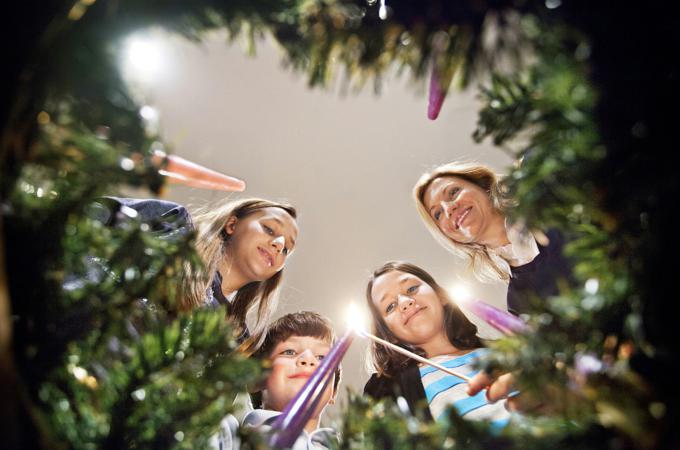Celebrating Advent
Advent is upon us. While the world seems to be a frenzy of Christmas shopping, traveling, decorating and entertaining, the Church presents us with a unique traditional alternative: a season of reflection, preparation and penance as we anticipate the birth of Christ.
Contrary to popular practice and belief, Advent is more than a frantic countdown to Christmas. Even some Catholics may not fully understand the penitential spirit of the pre-Christmas season, as a time of fasting, prayer and almsgiving meant to prepare the faithful for Christ's birth. These traditional Advent practices date back to the earliest days of the Church.
The more faithfully the season of Advent is observed, the more joyful the season of Christmas will be. Without a time of fasting and self-denial, the joy of Christmas becomes routine and loses its value as a sacred feast.
The Church encourages participation at weekday Masses during Advent, because in the Eucharist we find the source and goal of our Advent preparation: Christ himself, whose sacrifice reconciles us with God.
The following are some further ideas and popular traditions for making Advent a time of anticipation and preparation for the joy and mystery of Christmas:
The Advent wreath -- This tradition, which has its roots in Germany, is probably the best-recognized Advent custom. A wreath made of evergreens symbolizes the many years from the time of Adam to the time of Christ, during which the world awaited its Redeemer. It also represents the years that the Church has continued to anticipate His second and final coming. The wreath holds four candles: the three purple ones lit for the "penitential" Sundays, and one pink candle for Gaudete Sunday, the joyful third Sunday in Advent.
The empty manger -- Many families set out an incomplete Nativity scene, leaving the manger empty in anticipation of the arrival of baby Jesus. As the Advent season progresses, acts of charity and good deeds are rewarded with pieces of straw or paper with which children can line the empty manger, preparing a soft bed for the Christ child. The more good deeds and sacrifices they undertake, the softer and more comfortable the baby Jesus will be in His humble crib.
St. Nicholas Day -- The feast of St. Nicholas is on Dec. 6. On the evening of Dec. 5, each child puts out an empty shoe in the hope that the kind bishop -- with his miter, staff, and bag of gifts -- will pay a visit. The modern-day figure of Santa Claus is modeled after this real-life early Christian hero from the fourth century. Many families give small gifts on both St. Nicholas Day and Christmas Day.
The Jesse tree -- The Jesse tree recalls Christ's ancestry through symbols, relating Scripture to salvation history by showing the progress from creation to the birth of Christ. The tree can be an actual dried branch or bundle of branches, or can be cut from paper or cardboard. Each day of the advent season is represented by a figure from Scripture, as history advances toward the arrival of humanity's Savior.
Blessing of the Christmas tree -- In blessing the tree which will be decorated and laden with gifts, we are reminded of the significance that the "tree" plays in our Catholic faith. Point out to your children that our first parents, Adam and Eve, were forbidden from eating from the Tree of the Knowledge of Good and Evil, and that Christ paid the ultimate price for our redemption by hanging on a "tree," the Cross, which is also referred to as the Tree of Life.
The legend of the Christmas tree has its roots in many cultures. In the eighth century, St. Boniface gave the balsam fir tree to the Druids in place of the oak tree, which was the symbol of a pagan idol.
"The fir tree is the wood of peace, the sign of an endless life with its evergreen branches," the saint told them. "It points to heaven. It will never shelter deeds of blood, but rather be filled with loving gifts and rites of kindness." Other traditional explanations compare the evergreen tree, which never loses its leaves, to the eternal life and hope which is found in Christ.
However you choose to observe the season, remember: the patience and penance of Advent will open your heart to the joy of Christmas!



















